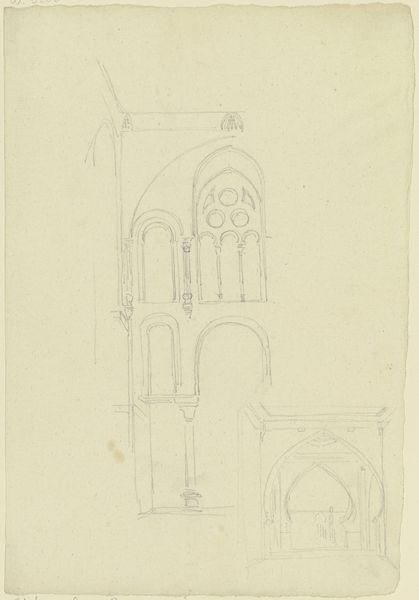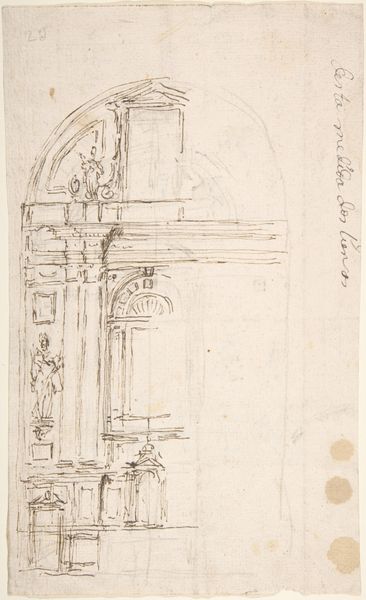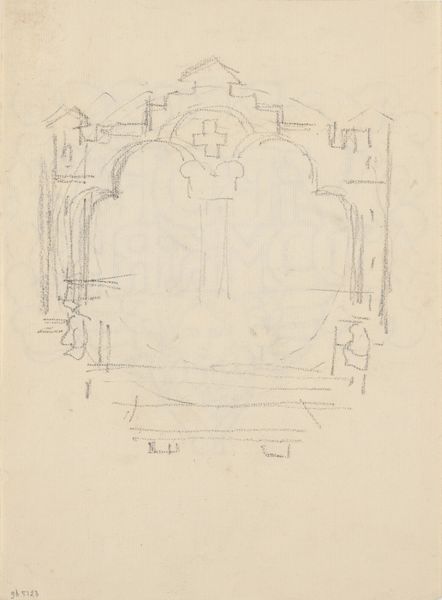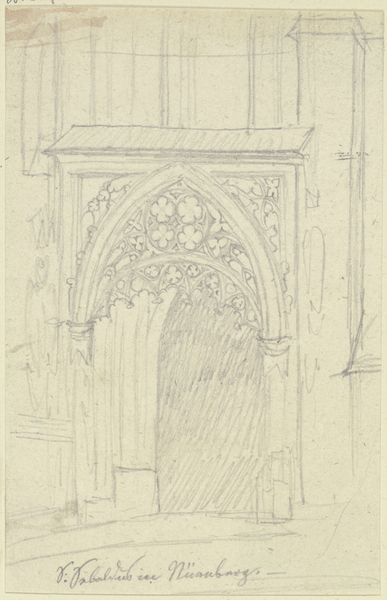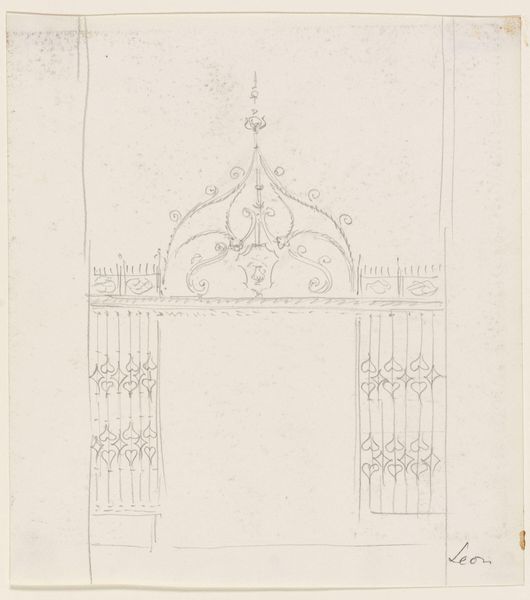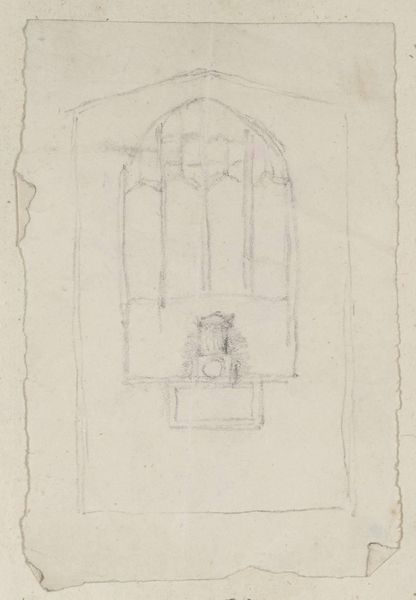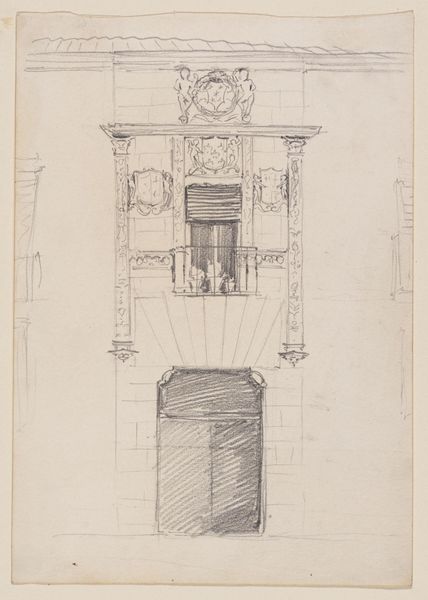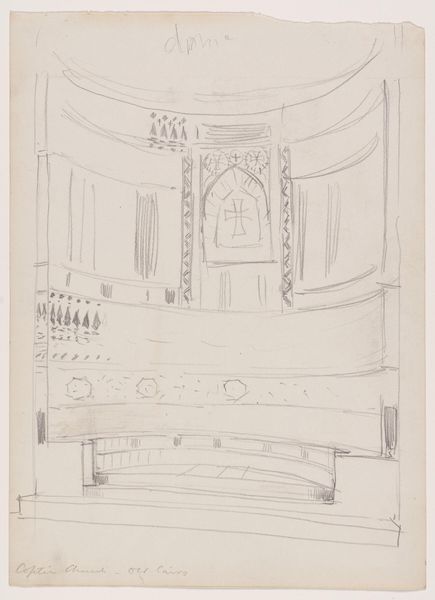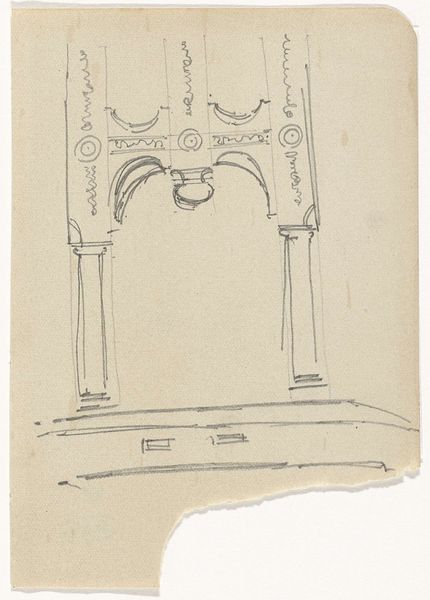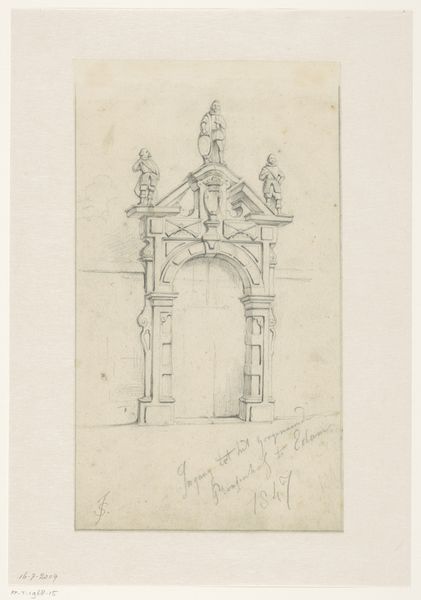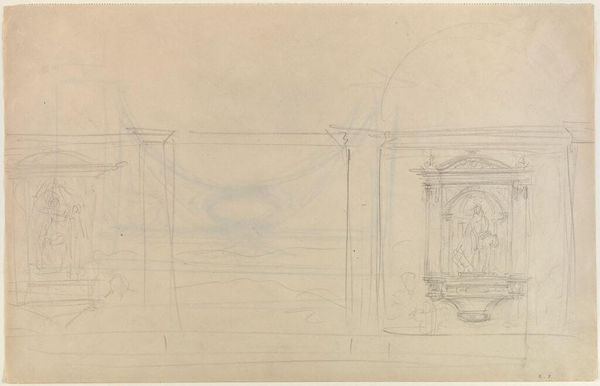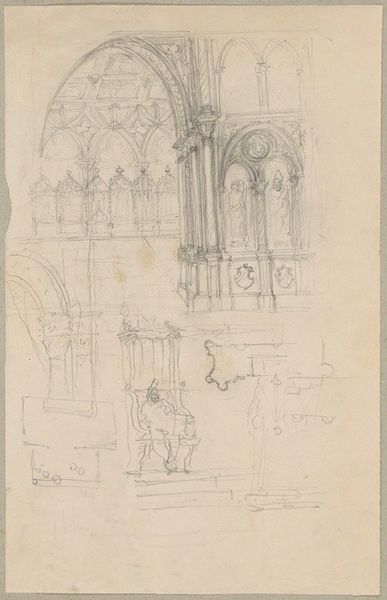
drawing, print, paper, pencil, architecture
#
drawing
#
neoclacissism
#
toned paper
#
light pencil work
#
quirky sketch
# print
#
paper
#
form
#
personal sketchbook
#
idea generation sketch
#
sketchwork
#
ink drawing experimentation
#
pencil
#
line
#
sketchbook drawing
#
storyboard and sketchbook work
#
sketchbook art
#
architecture
Copyright: Public Domain
Curator: Here we have an intriguing design sketch titled "Fireplace Design," dating roughly from 1800 to 1900. It resides here at the Metropolitan Museum of Art. Editor: There’s a charming quality to it. A lightness and freedom in the lines—it feels very immediate, like a thought caught on paper. Curator: Precisely. Note the use of pencil and toned paper, typical materials for architectural drawings of the era. Observe how the anonymous artist employs delicate lines to render a neoclassical fireplace. Editor: I am compelled to consider the labour embedded here, quite literally. What level of apprenticeship was needed to execute such delicate line work and understand its eventual industrial output. Was this sketch for a noble home, or part of a broader trend? I find myself drawn to those unformed areas. The process seems as vital as the intended form. Curator: Indeed. The formal structure is paramount. See how the composition guides our eyes, tracing the elegant curves and right angles. The form embodies Neoclassical ideals: symmetry, order, and a refined sense of proportion. We might interpret the fireplace as a symbol of hearth and home. Editor: And yet the unsteadiness suggests that ideals can become tools of suppression if used to enforce aesthetic expectations too strictly. How was such decoration applied? Were they created by artisans or imported readymade? These fireplaces were luxury items requiring very specialized manual effort at a time when technology could have lightened this labor. Curator: The sketch indeed prompts a deeper exploration beyond surface appearance, and how ideas get generated for material implementation. This delicate drawing acts as a critical node through design. It exposes the values and priorities involved. Editor: It certainly provides space for examining aesthetic choices as concrete social ones, and that for me opens up ways into wider reflections. Thank you. Curator: A fitting observation. I, for one, was hoping for some insights into structural integrity but your observation about its wider implication adds a great lens.
Comments
No comments
Be the first to comment and join the conversation on the ultimate creative platform.
